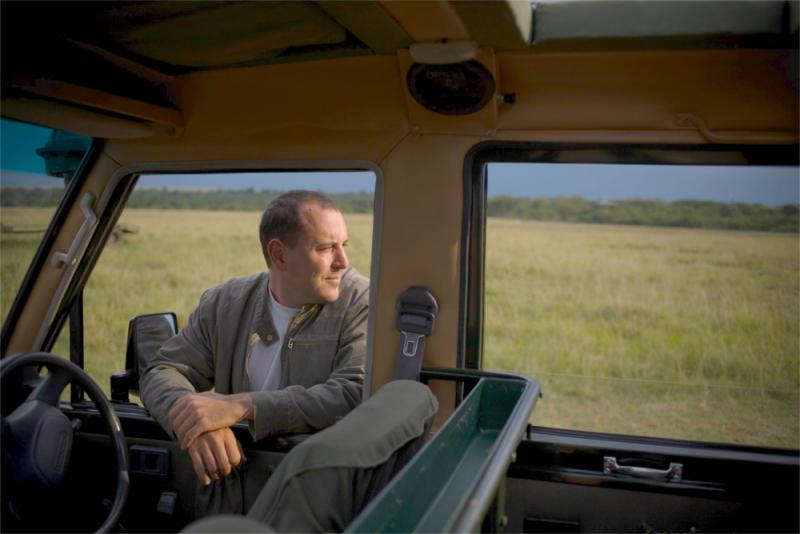In the first part of a series of interviews with those whose job it is to explain Italy to the world, Carol King speaks to Stephan Faris about his life as a Rome correspondent, and his experience of living and working in Italy.
1. How long have you worked in Rome as a correspondent and who do you write for?
I’ve been in Rome since 2006, writing for Fortune Magazine, TIME, The Atlantic and Businessweek, and occasional others. I don’t have a staff position with any of them, so I do each piece on assignment.
2. Do you have a typical day?
Days vary wildly, but I’ve found that I find a frightening proportion of my typical day trolling for story ideas, looking through papers and websites for ideas that can provide the entrance point or substance of an article, or reaching out to people who I hope might have something interesting to say.
3. How do you select which stories to file?
While I do write the occasional news story, which is often asked for by my editors, the bulk of this job is being on the ground and finding ideas to propose. After all, it’s me - and not my editors - who is here on the ground seeing things first hand. It’s only natural that I’d be in a better position to find things of interest.
4. Has social media, for example Twitter, affected how you work and if so, how?
My main use of Twitter is to come across story ideas I might have missed otherwise, but I also very much enjoy using it to bounce ideas of people and generally engaging people in conversations. It’s also a great place to be when important news is breaking - as you get a wide variety of news and reaction quickly.
5. How have you got your Italian to a level where you can do interviews and translate quotes accurately for a story?
Practice. Practice. Practice. I’m married to an Italian, so that’s definitely an advantage. I have been struck by how much better my verbal language skills are, compared to my reading or writing. Written Italian is in such a different register from the spoken version that there are times when for me it’s almost another language altogether.
6. What's the biggest challenge you face in explaining events in Italy to your readers?
The political spectrum is dramatically different from what you find in the United States or England. The political parties that we call left or right don’t really map on to what we’re used to at home.
7. What’s the most interesting story on Italy you’ve covered?
It’s one that I’ve only barely dipped my toe into - the clash and interaction between Italy’s rich regional cultures (most visible in food) and the levelling force of globalisation.
8. And what’s been the most shocking story?
I'd say [Silvio] Berlusconi, but he’s long ago ceased to shock.
9. Italy is facing an economic crisis at the moment, so what are your thoughts on its future?
I wonder whether the political system has what it takes to tackle the country’s challenges.
10. What do you like most about Italy and what do you like the least?
I’ve often found that my favorite bits are the flip side of my least favorite bits. Once again, let’s take food as an example. When I first arrived in Rome, I found the paucity of its international cuisine to be incredibly frustrating. What kind of world capital doesn’t have decent Thai food, Mexican restaurants, Vietnamese cuisine? It took me a few years to realise that the opposite side of the coin was the depth, richness and variety of what Italy has to offer.
11. What’s your favourite café or restaurant in Rome and why?
It’s probably Il Ristoro degli Angeli in Garbatella - typical Roman food raised up a notch. The Cacio e Pepe is to die for.
12. If you could work anywhere else as a correspondent where would it be and why?
Before Italy, I was briefly based in China and before that in Nairobi. I’d love to get back to Africa. But on the other hand, Italy has taught me that every country has its stories - if you look hard enough to find them.
 Stephan Faris writes for TIME, Fortune Magazine, The Atlantic and Salon.com from Rome, and is the author of Forecast: The Surprising - and Immediate - Impacts of Climate Change. He covered the invasion of Iraq for the New York Daily News as an unembedded reporter in the Kurdish north. He returned to Baghdad a year later for TIME. His website at http://www.stephanfaris.com/ contains some of his articles about Italy. He is on Twitter @stephanfaris.
Stephan Faris writes for TIME, Fortune Magazine, The Atlantic and Salon.com from Rome, and is the author of Forecast: The Surprising - and Immediate - Impacts of Climate Change. He covered the invasion of Iraq for the New York Daily News as an unembedded reporter in the Kurdish north. He returned to Baghdad a year later for TIME. His website at http://www.stephanfaris.com/ contains some of his articles about Italy. He is on Twitter @stephanfaris.










